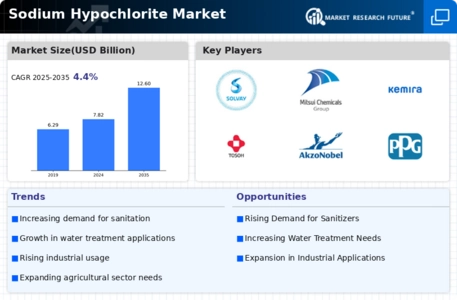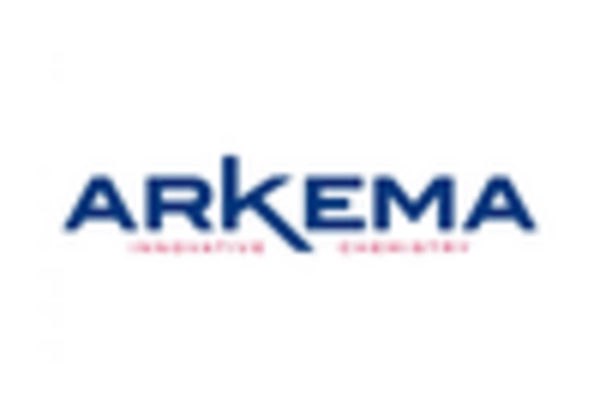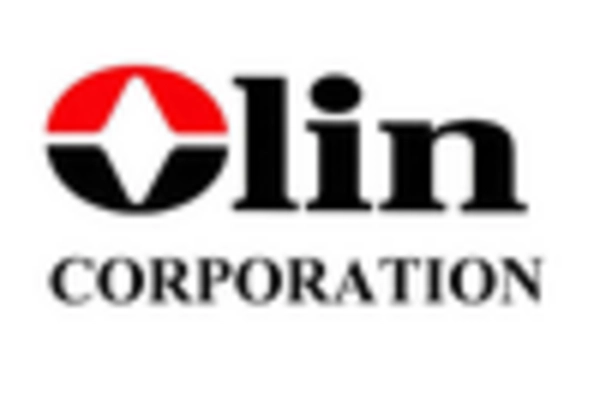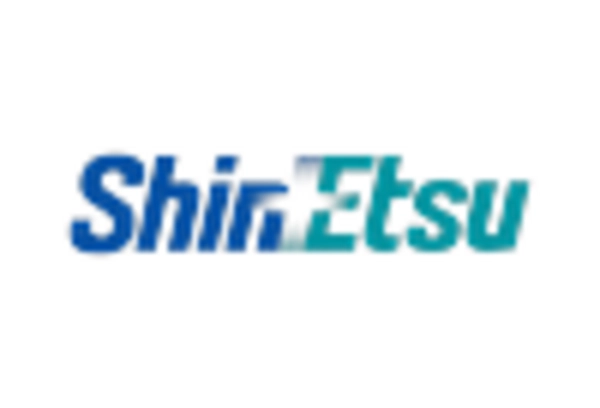Growth in Water Treatment Facilities
The Sodium Hypochlorite Market is significantly influenced by the expansion of water treatment facilities. As urbanization accelerates, the demand for clean and safe drinking water has become paramount. Sodium hypochlorite serves as a primary disinfectant in municipal water treatment processes, effectively eliminating pathogens and ensuring water safety. Recent data suggests that investments in water treatment infrastructure have increased by over 20% in the past two years, reflecting a commitment to public health. This growth in water treatment facilities is expected to bolster the Sodium Hypochlorite Market, as the need for reliable disinfection methods remains critical.
Rising Demand in Industrial Applications
The Sodium Hypochlorite Market is experiencing a notable surge in demand due to its extensive applications in various industrial sectors. Industries such as textiles, paper, and pulp utilize sodium hypochlorite for bleaching and disinfection processes. The increasing focus on maintaining hygiene standards in manufacturing facilities has further propelled the need for effective disinfectants. In 2023, the market for sodium hypochlorite in industrial applications was valued at approximately 1.5 billion USD, indicating a robust growth trajectory. This trend is likely to continue as industries increasingly prioritize safety and cleanliness, thereby driving the Sodium Hypochlorite Market forward.
Technological Advancements in Production
The Sodium Hypochlorite Market is witnessing advancements in production technologies that enhance efficiency and reduce costs. Innovations in manufacturing processes, such as improved electrolysis methods, have led to higher purity levels and reduced energy consumption. These technological improvements not only lower production costs but also increase the competitiveness of sodium hypochlorite in various applications. Market reports indicate that production efficiency has improved by approximately 25% over the last five years, allowing manufacturers to meet rising demand more effectively. As these advancements continue, the Sodium Hypochlorite Market is expected to thrive, driven by both cost-effectiveness and product quality.
Increased Awareness of Hygiene and Sanitation
The Sodium Hypochlorite Market is benefiting from heightened awareness regarding hygiene and sanitation practices. As consumers and businesses alike prioritize cleanliness, the demand for effective disinfectants has surged. Sodium hypochlorite is widely recognized for its efficacy in killing bacteria and viruses, making it a preferred choice in both commercial and residential cleaning products. Market analysis indicates that the household cleaning segment has seen a growth rate of approximately 15% annually, driven by this increased focus on hygiene. Consequently, the Sodium Hypochlorite Market is poised for continued expansion as consumers seek reliable solutions for maintaining cleanliness.
Regulatory Support for Disinfection Standards
The Sodium Hypochlorite Market is positively impacted by regulatory frameworks that emphasize disinfection standards across various sectors. Governments and health organizations are increasingly mandating the use of effective disinfectants in healthcare, food processing, and public spaces. Sodium hypochlorite, recognized for its strong antimicrobial properties, is often recommended as a primary disinfectant. Recent regulations have led to a 10% increase in the adoption of sodium hypochlorite in healthcare settings, where stringent hygiene protocols are essential. This regulatory support is likely to enhance the Sodium Hypochlorite Market, as compliance with disinfection standards becomes a priority for many organizations.


















Leave a Comment